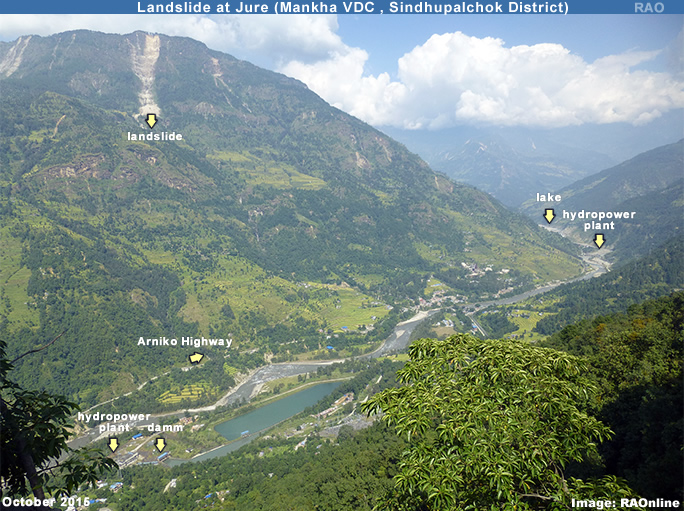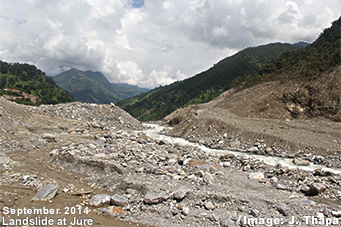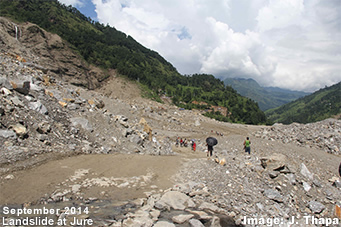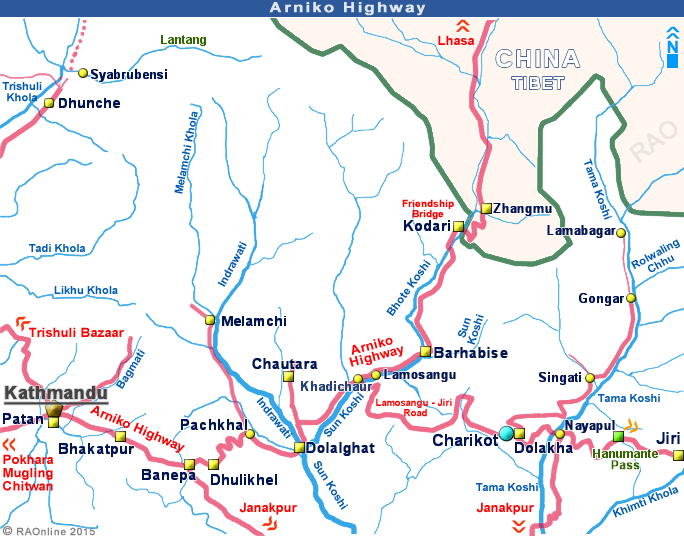 |
Nepal Climate |
 |
Nepal Information |
|
|
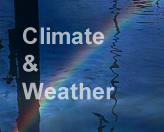 |
| Climate: Natural Hazards in Nepal |
| Monsoon season 2014 |
 |
| Landslide at Jure (Sindhupalchowk district) |
Loss and damage happening now, Nepal case study by UNU-EHS finds
The latest Case Study Report from the United Nations University Institute for Environment and Human Security (UNU-EHS) contributes new knowledge to the concept of Loss and Damage. The report brings together field research conducted by UNU-EHS experts in the aftermath of the landslide that hit Sindhupalchok District, Nepal, in August 2014. Loss and Damage is one of the main climate change challenges of recent years and a key issue of COP22.
"Our research findings highlight the fact that Loss and Damage is not only an issue for the future, but something that vulnerable communities are experiencing right now," says Dr. Kees van der Geest, Senior Scientist at UNU-EHS and Lead Researcher of the study. "Our research has shown that people are not passive victims of climactic changes or natural events. They are doing much to avoid loss and damage, but as seen in the Nepal case study the stressors are often too overwhelming for them."
Following the massive landslide in Nepal’s Sindhupalchok District in August 2014, UNU-EHS surveyed 234 households to gain an understanding of the wide range of economic and non-economic losses and damages sustained by the households in the area as a result of the catastrophic event. The study also looked into the effectiveness of the various preventative and coping measures adopted by the respondents, and analyzed what might have stopped households from doing more to protect themselves.
One of the most severe impacts of the landslide was damage to or loss of land. Two thirds of the respondents (68%) estimated the losses and damages to land for their households at more than USD 1,000 and for over half of this group, the losses were more than USD 10,000. The research also found that respondents with an annual income of less than USD 1,000 incurred median losses of around USD 6,000, equivalent to 14 times the average annual income, whereas respondents with an annual income of more than USD 2,000 had median losses of more than USD 10,000, which was roughly three times their annual income on average.
Commenting on the significance of this new study, Raju Pandit Chhetri, the Nepalese Executive Director of Prakriti Resources Centre and member of the Climate Change Council, says: "This was a highly innovative and useful people-centred study into loss and damage carried out in our country. Nepal is highly prone to natural disasters such as landslides, flooding and droughts. Until now, however, we have lacked a scientific understanding of what loss and damage following such an event looks like at a local level. With these findings, we can analyse how communities are protecting themselves against natural hazards and what can potentially be done to help them become more resilient."
Alongside losses and damages, the newly-published research also looked into the various preventative mechanisms adopted - or not - by households in the Sindhupalchok District, as well as the relative effectiveness of each. House adjustments, livelihood diversification and proactive migration were evaluated most positively by respondents, and land use adjustments and physical barriers were considered least effective.
Dr. Robert Oakes, Senior Scientist at UNU-EHS stressed the importance of distinguishing between forced and voluntary migration in the context of climate change and Loss and Damage. "Voluntary migration can be an effective way of adapting to climate stressors and increasing resilience. Forced migration on the other hand is a key driver of Loss and Damage. When people have to leave their homes again their will, we can see that especially the non-economic loss and damages, such as threats to health, rights and culture are especially high. Case studies on the ground are so important they help to give an accurate picture of the choices people can make, but also the constraints they are under."
About UNU-EHS
UNU-EHS addresses the risk and vulnerability aspects of human security and the consequences of complex environmental hazards for sustainable development. Through applied research and education UNU-EHS puts climate vulnerable communities at the centre of the climate policy debate. The United Nations University (UNU) is a global think-tank and the academic arm of the UN.
| Source: UNU-EHS United Nations University Institute for Environment and Human Security, 9 November 2016 |
 |
top
| Nepal Case Study Report: Jure landslide |
 |
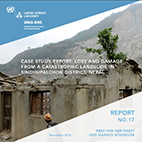 |
| Source: UNU-EHS United Nations University Institute for Environment and Human Security |
|
 |
| more
information |
 |
| Links |
 |
 |
 |
External
link |
|

